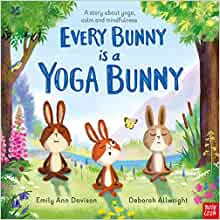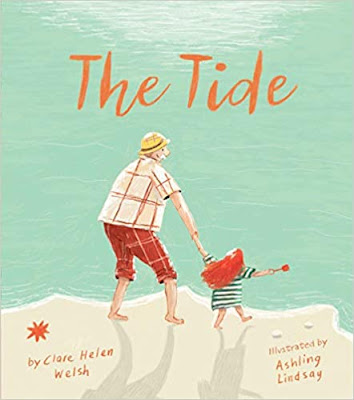EVENTS A perfect picture book day out
A whole day to revel in picture books! SCBWI South West hosted their first in-person event since the pandemic, on 19th March 2022. Amarantha Pike shares her experience.
I was en route to the first in-person SCBWI South West event in over two years: a day-long workshop with Clare Helen Welsh, organised and hosted by Regional Organiser Lydia Massiah. Clare, a highly regarded and much-awarded author, has published many picture books: some funny and wacky, others that help children to deal with big feelings and difficult issues.

Clare Helen Welsh
In turn, we introduced ourselves, showing the picture books we’d brought. Their variety - current and old, funny and dark - reflected the diversity of the background and experience of those in the room. Some were new to picture books but had lots of experience writing MG or YA. Others were from artistic backgrounds and were relatively new to writing. All were there to learn.
Scissorella (Anderson Press)
We learnt about the many different types of hook. For example, it could be the character who is a bit different, such as the eponymous hero in King of the Swamp by Catherine Emmett or the subject (unicorns or dinosaurs?) or the setting (space or under the sea?). Or it might be the angle that it takes, with a new approach to a perennial issue: those themes that publishers are always interested in - such as siblings or kindness or facing fears - if they’re done a bit differently (‘80% the same, 20% different’).
King of the Swamp (Simon & Schuster)
We were taken through plotting. We talked about the old dichotomy of pantsers vs plotters and how, by knowing certain key things before we start writing, we could move further towards the plotting end of the scale. Clare told us that she needed to know character, theme, conflict and ending before she began.
We learnt about pacing; the building, building and then the climactic spread nine. We learnt about conflict and the many places that it can come from, but crucially how (in all but a very few cases) it must be there. Without struggle, she asked, then why would I keep reading?
Every Bunny is a Yoga Bunny (Nosy Crow)
The Tide (Tiger Tales)
Then, of course, there was character. Giving them their flaw and their want or need; creating those high stakes that keep the reader turning the page. We’re usually willing our protagonist to succeed. Sometimes, however, we read on to see if a less likeable character will learn their lesson in the end. Clare gave Town is by the Sea by Joanne Schwartz as a powerful example of a character not getting what they want. And in Solomon Crocodile, by Catherine Rayner, our hero never learns anything!
Town is by the Sea (Walker Books)
Solomon Crocodile (Macmillan Children's Books)
Heading back on the train, I felt uplifted and inspired. Thoughts from the day began to coalesce. Of the 25 books Clare writes a year, three or four are picked up. Absolutely everything can be mined for children. Writing from the heart shows, it helps you stand out.
I felt ready to dig, ready to throw up ideas, from my dreams, from my childhood, from the multiple funny and strange experiences of my life. Ready to play, to shape and to hone. Here was a chance to return to a notebook - and to that wonderfully weird place that can sometimes be my head.
As I reached home, I realised one more thing. I had known far more about picture books than I’d thought. After all, there’s a universalism to story - and story is what we all do.
* Header image: Everything Changes by Clare Helen Welsh and Asa Gillan.
(to be published by Little Tiger Press. August 2022)
*
Amarantha Pike writes MG magical realism adventure and is a member of the Rogue Critters SW critique group. When she was seven, an ancient lady in a floor-length fur coat told her that if she wished to be an author, she must start a diary. Her diaries since, taking in childhood pets (wild rabbits and crows), journeys across Africa and India (alone and with her small daughter), plus plenty of mundane stuff in between, now clog up the little home where she lives with her partner, her football crazy daughter and her somewhat dishevelled cockapoo. Her authorly quest continues. Twitter: @amarantha_pike
*
Anna Gamble is the Social Media Editor for Words & Pictures and a member of the editorial team.
















No comments:
We love comments and really appreciate the time it takes to leave one.
Interesting and pithy reactions to a post are brilliant but we also LOVE it when people just say they've read and enjoyed.
We've made it easy to comment by losing the 'are you human?' test, which means we get a lot of spam. Fortunately, Blogger recognises these, so most, if not all, anonymous comments are deleted without reading.